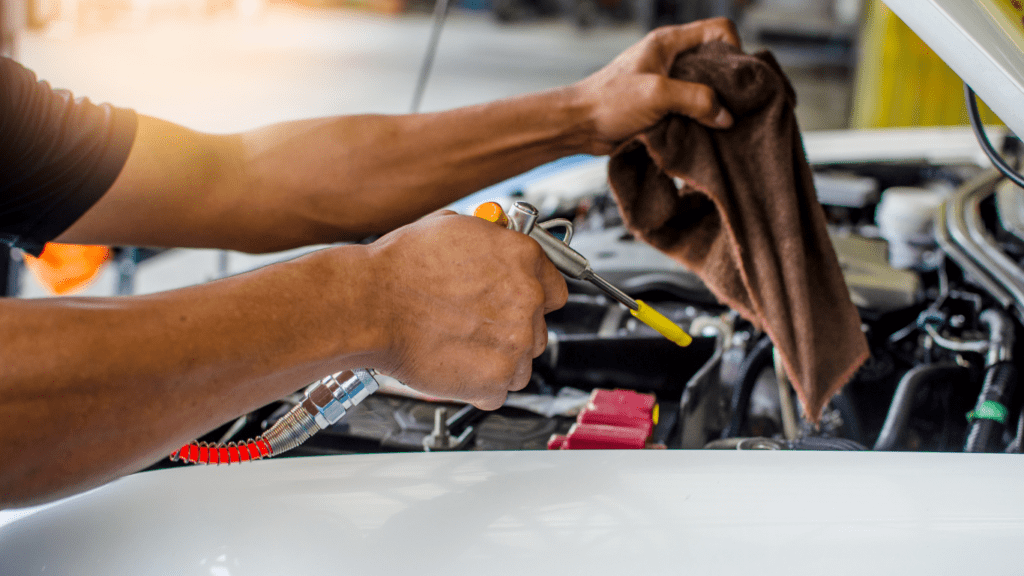The Importance of Diagnostic Services in Modern Cars
Advanced diagnostic services play a crucial role in maintaining modern cars, providing tools that help quickly identify and resolve vehicle issues.
Key Benefits for Vehicle Maintenance
- Accurate Issue Identification: Diagnostic services pinpoint problems accurately, reducing guesswork for mechanics.
- Time and Cost Efficiency: By identifying specific issues, these tools minimize repair time and costs, benefitting both mechanics and car owners.
- Preventive Maintenance: Diagnostics help in early detection of potential problems, preventing costly future repairs.
- Enhanced Vehicle Performance: Regular diagnostics ensure all systems function optimally, maintaining the car’s performance.
- On-Board Diagnostics (OBD-I & OBD-II): The introduction of OBD systems in the 1980s and their evolution to OBD-II in 1996 marked a significant advancement, allowing for standardized trouble codes.
- Real-Time Data Analysis: Modern diagnostic tools analyze real-time data, providing immediate insights into a vehicle’s health.
- Integration with Software: Today’s diagnostics integrate with software applications, offering detailed reports and data logs for better analysis.
- Wireless Diagnostic Tools: Wireless technologies enable quick and easy diagnostics without the need for physical connections, enhancing convenience and efficiency.
By leveraging these advanced diagnostic techniques and benefits, maintaining a modern vehicle becomes more manageable and reliable.
Understanding Vehicle Diagnostics
Vehicle diagnostics play a vital role in modern cars by swiftly identifying issues and helping maintain optimal performance.
How Do Car Diagnostics Work?
Car diagnostics involve using specialized tools to connect with a vehicle’s onboard computer system. Technicians retrieve Diagnostic Trouble Codes (DTCs) that indicate problems. These codes, specified by the malfunctioning part, guide technicians to the root cause. The system continuously monitors components and alerts drivers through dashboard indicator lights.
- OBD Scanners: On-Board Diagnostics (OBD) scanners, such as OBD-II, retrieve trouble codes and real-time data.
- Diagnostic Software: Software analyzes data from OBD systems and generates detailed reports on vehicle health.
- Wireless Tools: Bluetooth and Wi-Fi-enabled diagnostics provide convenience and rapid data transfer.
- Multimeters: These measure electrical values, essential for diagnosing wiring and sensor issues.
- Thermal Imaging: Identifies overheating components, ensuring efficient detection of thermal-related problems.
Common Issues Detected by Diagnostic Tests

Diagnostic tests in modern cars readily identify various issues. Mechanic precision improves dramatically with the identification of specific problems.
Engine Problems
Diagnostic tests often detect engine misfires, low compression, and faulty sensors. Misfires occur when fuel in cylinders doesn’t combust completely, leading to rough idling and reduced power.
Low compression signals worn piston rings or valves, affecting engine efficiency. Faulty sensors, like oxygen or mass airflow sensors, send incorrect data to the engine control unit (ECU), causing performance issues.
Electrical System Issues
Electrical diagnostics reveal battery failures, alternator problems, and wiring faults. Battery failures usually indicate degraded cells or poor connections, preventing proper charging.
Alternator problems involve insufficient charging, leading to electrical component failures while driving. Wiring faults, such as short circuits or corroded wires, can cause intermittent electrical issues, affecting components like lights and infotainment systems.
Advancements in Diagnostic Services
Diagnostic services for modern cars have improved significantly due to technological innovations. These advancements have enhanced efficiency and accuracy in identifying vehicle issues.
Integration with Mobile and Cloud Technology
Integration with mobile and cloud technology has revolutionized car diagnostics. Mobile apps can now connect directly to a car’s onboard computer, allowing users to access diagnostic information in real-time from their smartphones.
Cloud-based solutions offer remote diagnostics and storage of extensive vehicle data, ensuring continuous monitoring and quicker issue resolution.
A mechanic can remotely diagnose and sometimes even fix minor issues without needing the car in the shop, saving time for both the car owner and the mechanic.
Predictive Diagnostics and AI
Predictive diagnostics and AI are transforming preventive maintenance. AI algorithms analyze historical data and real-time information to predict potential failures before they occur.
This proactive approach minimizes downtime and prevents costly repairs by addressing issues early.
For example, an AI system can detect patterns that suggest an impending battery failure or alternator problem, alerting the driver to take action before a breakdown happens. Predictive diagnostics reduce the guesswork and enhance the overall maintenance strategy.

